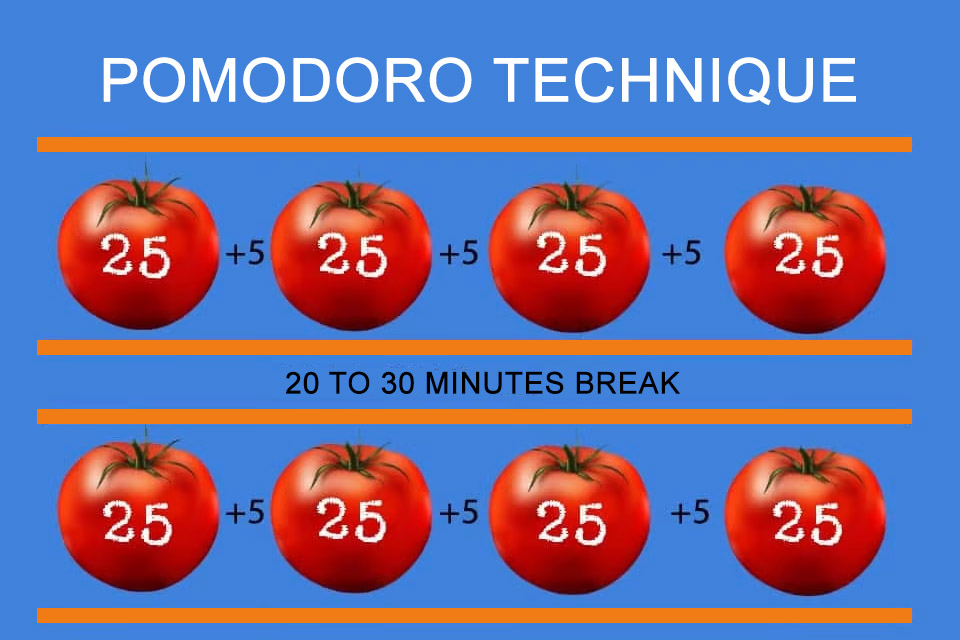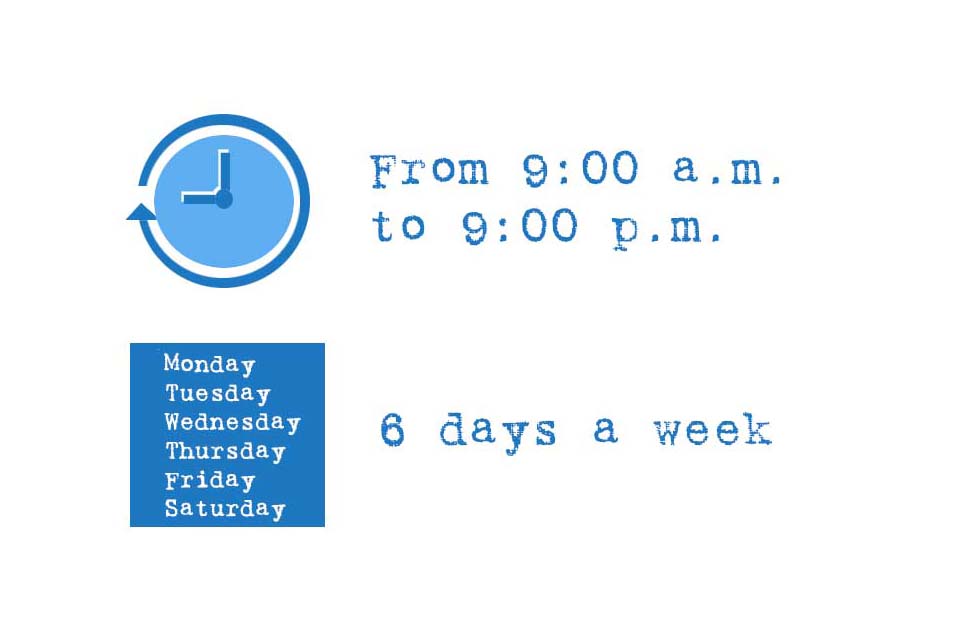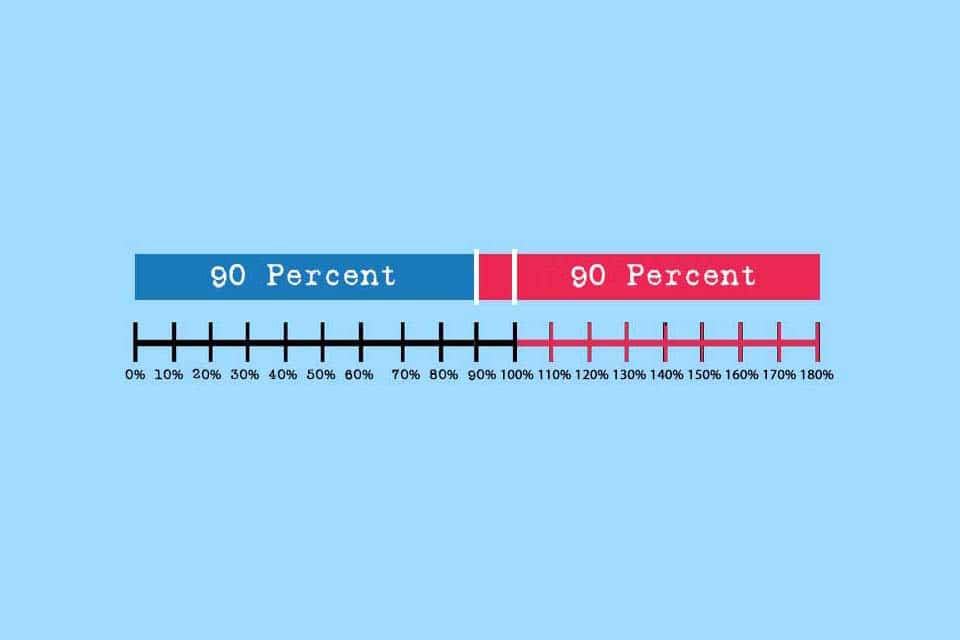What is the Pomodoro Technique?
Smartpedia: The Pomodoro Technique is a time management method that alternates 25-minute work intervals with 5-minute breaks.
Pomodoro Technique – concentrated work in 25-minute time intervals
The Pomodoro Technique is a time management method for individuals or companies. It was invented by Francesco Cirillo. Cirillo is a lecturer at the Berlin School of Economics and Law, owner of Cirillo Consulting GmbH and a productivity expert. And productivity is a central concern of the technique, which is based on two essential elements:
1. Pomodori: 25-minute time or work intervals for which a timer or alarm clock is set, and in which written tasks are worked on. In other words, the method uses the concept of a timebox. The name of the technique comes from a kitchen clock in the shape of a tomato, which Francesco Cirillo used in his first experiments. Pomodoro is the Italian word for tomato.
2. Breaks: there is a 5-minute break after each work interval, and a longer break of 20 – 30 minutes after every four pomodori.
Steps in the Pomodoro Process
There is a small sequence of 6 steps – sometimes called the Pomodoro Process:
- Selecting and writing down the task to be done. Writing it down leads to an ideally clear delineation of the task and a focus on the task. Francesco Cirillo recommends simple tools such as a pen and a sheet of paper.
- Setting the timer for 25 minutes, combined with a personal commitment to concentrate only on this task for these 25 minutes and not to be interrupted. Incoming emails should not be read and telephone calls should not be answered. It is even advisable to switch off relevant programmes and devices during the 25 minutes.
- Work until the timer rings after 25 minutes. When the timer rings, work on the task ends, even if the task was chosen to be too comprehensive. A timebox values the time factor – in this case the 25 minutes – more highly than other factors such as the quality of the work or the degree of completion.
- Physically ticking off the task on the sheet of paper. Checking off acts as a confirmation of concentrated work on the defined task and creates a sense of achievement.
- A short break of 5 minutes follows the ticking off of the task.
- After 4 pomodori, take a longer break of 20 to 30 minutes to rest a little and recharge before the next pomodori.
Interestingly, planning and prioritising tasks as such is subsumed in step 1 – under selection. However, this point is often a challenge in organisations, especially when several people are working synchronously on one task.
Pomodoro Technique – Advantages and Disadvantages
There are a number of advantages, but possibly also some disadvantages, to using the Pomodoro technique. Here are some advantages:
- The technique or process is very easy to understand and easy to apply.
- The 25-minute time intervals support the breaking down of large tasks into smaller units and the starting of large – in some cases unpleasant – tasks.
- By defining tasks that can be worked on within a Pomodoro, effort estimation improves over time. Practice makes perfect.
Similar tasks (answering e-mails, writing offers, making calls) can often be bundled together and thus completed “quickly”. - Looking back at Pomodori makes it possible to identify time wasters and optimisation potential.
- Avoiding interruptions during the completion of tasks promotes both creativity and the production of concrete results. Or to put it another way: productivity increases. And this in relation to a concrete task and over the sum of the tasks.
- Ticking off tasks acts as a self-efficacy booster, possibly strengthening motivation and promoting a sense of progress.
- Regular breaks increase safety at work, improve physical and mental health, and encourage interaction with colleagues who are also taking a break.
These benefits may also be offset by some disadvantages:
- The Pomodoro Technique claims to offer benefits for individuals and organisations. In practice, however, it can be challenging to break down tasks into 25-minute work intervals at the organisational level. Organisations therefore need to find out for themselves which work steps, work packages or tasks the technique fits.
- The option of not answering emails or calls for 25 minutes is not available everywhere. So the technique does not fit for all roles in an organisation.
- Not only do regular breaks not fit all roles in a company, for some jobs they are downright out of the question: teachers, educators, bus drivers, pilots, paramedics etc.
- It is often said that the threshold for getting started is getting lower. This is true, but starting a task does not mean finishing it. Finishing tasks is essential, however, especially since otherwise there is a risk of the 90% syndrome or the 90-90 rule, for example.
- Indirectly, the technique requires a high degree of self-discipline. However, this is not always the case and whether it is achieved through the use of the technique would have to be assessed on a case-by-case basis.
- Not all people have the same concentration span – employees should therefore define the pomodori themselves.
Pomodori negate the existence of flow¹ – a state in which people are at their maximum capacity. - Despite all the advantages of the method, it should not be prescribed centrally for employees within an organisation. Of course, meetings could be held in 25 minutes, but other prescriptions could be seen as “encroaching”.
Last but not least, the Pomodoro Technique, like other time management methods, emphasises productivity as a special element. But why should productivity be more important than, for example, sustainability? Why is it desirable to realise as many productive time intervals as possible? And does the application possibly increase the stress level of the user?
Pomodoro Timer – a Selection of Tools
There are a number of tools, apps or websites that offer timers to activate defined timeboxes. Here you will find a selection:
- Pomodoro TECHNIQUE – directly from Francesco Cirillo
- Tomato Timers
- Pomodoro Tracker
- Pomofocus
- Pomodor
- timer.pizza
- KanbanFlow
- Engross
- FocusList
- focus booster
- Focus To-Do
- Pomodoro-Timer
- Be Focused
Of course, you can also simply use a conventional alarm clock or the timer function in your smartphone.
Impulses to discuss
[A] Many time management methods promise to increase productivity.If this is true, the question arises why people change methods over time or stop using them at some point?
[B] What do you think of the idea of using the first Pomodoro session to plan and prepare for the day?
Notes:
“Pomodoro®” is a registered trademark of Francesco Cirillo. On his website you can find many useful tips around the described technique.
[1] The flow is addressed, for example, in the Yerkes-Dodson Curve.
A completely different approach is advocated by the 60-Minutes Method, which recommends setting aside 60 minutes each day to work on a dedicated task.
If you like the article or would like to discuss it, please feel free to share it in your network. And if you have any comments, please do not hesitate to send us a message.
Here you will find additional information from our Smartpedia section:



